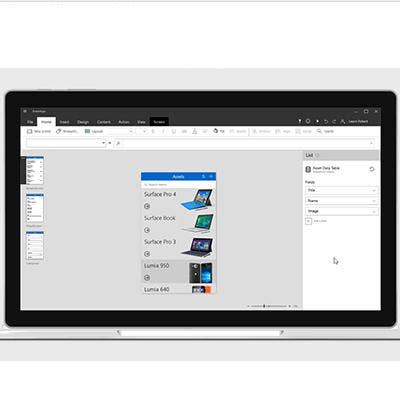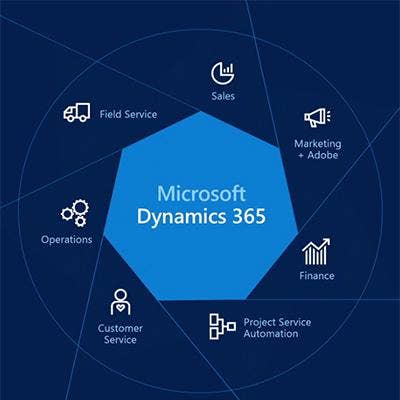Microsoft Exec On New Offerings For ISVs, The Growth Of Dynamics 365 And 'Doubling Down' On The Cloud Solution Provider Model

The Latest From Microsoft
During Microsoft's Build conference for developers this week, the company debuted a new offering targeted at helping ISVs to expand their businesses. ISVs who host their apps on Microsoft Azure are now able to get their apps integrated into the workflows of enterprise customers more easily, by connecting app data to Office 365 customers. To find out more about the news, and catch up on other developments that are relevant to channel partners, CRN spoke with Takeshi Numoto, the corporate vice president for cloud and enterprise at Microsoft.
What follows is a portion of our interview with Numoto.

Tell me about the opportunity for ISVs with this news?
From a developer standpoint, great tech isn't necessarily the only thing that they need to be successful. We're also making investments specifically for ISVs and aligning with them, to help them be successful by building on our platform. It's not all about tech – particularly in the cloud, as technology matures. If you take look at how Abhay [Parasnis], the CTO of Adobe today showed up on stage at Build, and he talked about how you need to align with the right partner. It's not about this service or this feature. Because things are becoming mature enough that a sophisticated developer can build their tech in difference places. But beyond the technology, there is an alignment that they need to be successful, particularly in reaching enterprise customers.
We're making Azure a great place to help ISVs reach into all the enterprise customers that we have. During the last earnings, we talked about how Office 365 has over 100 million monthly active users. That's a huge exposure we can provide and opportunity we can provide to ISVs, if they can figure out a way to get their solutions exposed to these customers – and have that be wired into how these enterprise customers get their work done.

How does this new offering work?
Our products PowerApps and Flow let end customers build workflows that connect different systems. So maybe it's your CRM system, maybe it's your ERP system, maybe it's your asset management or other content management systems. It basically lets enterprise customers build workflows that connect different systems to create composite applications – basically create new workflows. And Office 365 customers can already use it to do things like trigger a workflow every time a document is uploaded to the SharePoint site, or when an email gets received in a certain inbox. But normally an enterprise customer would have to step up to the full version of PowerApps and Flow, from the one that's included in Office 365, to get the full set of capabilities. What we're announcing today is that for ISVs who run their SaaS solutions on Azure, Office 365 enterprise customers actually don't need to step up to the full version of PowerApps and Flow to be able to use connectors to these ISV SaaS solutions, to integrate their workflow into the Office 365 environment.

What makes this such game changer for enterprises and ISVs?
No enterprise application is ever done. Business needs constantly change, so a solution you thought you just built will constantly need to get modified. So you always need to connect different systems. You might have an IoT system that gives you lots of telemetry data from your equipment. That's interesting, but only if you can also integrate that data with the service record of the equipment.
Customers constantly have this need to integrate across different systems. There's a need for what's known as a composite application. So as an example, you can trigger something in another system when a lead comes into a CRM system. That's a very difficult composite application type scenario. From an ISV standpoint, their value to their customers gets dramatically more infused if the system is more broadly adopted. And frankly there's no better way to get your solutions to be more entrenched in the workflow of a customer, than to have it intertwined in an Office 365 environment. It helps the ISV partners really land the value proposition of their solution—makes their solution more valuable, more sticky, and helps them grow their business.

Could you give a few more examples of how this would be useful?
Let's say you build an email campaign, and you've got a lot of leads. And you want to be able to create a workflow that captures the leads, and sends those to another system to have those leads scored. And [then] have an approval workflow that says these batch of qualified leads are going to be sent a customized offer – pulling from some assets that you have in another system. All of those require you to create a composite application that pulls together data sources from different systems.
IoT is a very hot category for a lot of our customers. Increasingly customers are collecting data from sensors they have in their environment. And you might analyze the data and set predictive maintenance scenarios. But actually you would want to go one step further and automatically schedule field service. These kinds of scenarios are numerous in terms of how you need to connect different systems. And the more connected these systems are, the more valuable each of the parts become.

What makes Dynamics 365 such an opportunity for partners?
We really do see customers needing to pull together all of their business processes in a coherent way, so they can share data across what was otherwise a siloed set of systems. And traditionally, categories like CRM and ERP were highly siloed. But those categories were really created more for vendors' convenience than the actual needs of the customer. The customer always needs that end-to-end view. Our approach with Dynamics 365 is to break down the barriers across these siloed systems, and enable them to start where they think they can get the highest uplift. So they don't have to consume the whole thing all at once.
In terms of business processes or business applications never being fully done – that's a great indication for partner opportunities. Every customer has their own unique business processes that makes them who they are. We provide a platform upon which we have lots of partners creating very tailored solutions for different industries and verticals, and for each of the customers within these verticals and industries.

Microsoft recently started guiding new MPSA Azure customers to Cloud Solution Providers. Is that a sign that Microsoft is putting more emphasis on the CSP model?
What we're trying to do is continuously look at how we can make the customer's experience of doing business with us to be as low-friction and easy as possible. And of course, selling licenses from a transaction standpoint is very different than selling cloud services. Because one is essentially selling a legal right, whereas another you're essentially provisioning a service. So CSP is a huge focus for us, one that we continue to invest in. And we are basically doubling down from a partner standpoint on CSP, as a way for partners to essentially provide a managed service on top of Azure – so that they can actually manage an end customer's experience of using Azure.